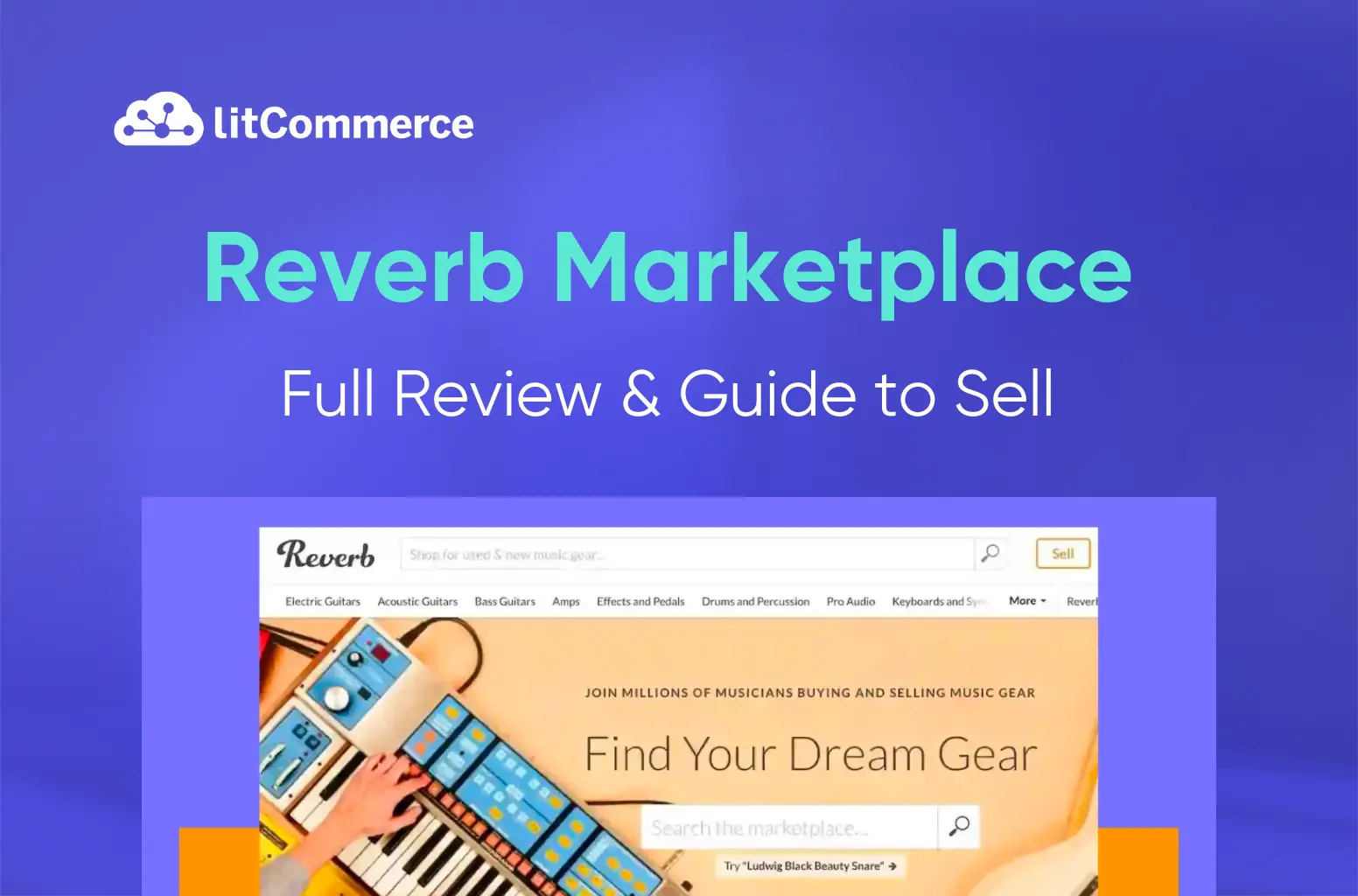Regarding the benefits of selling products on niche marketplaces (i.e., Etsy for crafts and hand-made goods) vs. massive marketplaces (i.e., eBay, Amazon, etc.), sellers are now scaling to such marketplaces to find better and reach their target customers. If you are wondering where to sell music equipment, you shouldn’t miss out on Reverb – an online marketplace for music gear.
In this article, we’ll be guiding you through the following:
- The basics of Reverb marketplace
- Reverb seller fees
- How to sell on Reverb marketplace
- Top-selling products on Reverb Marketplace
Let’s get down to it!
Reverb Marketplace: The Basics
Before going into how to sell on the Reverb marketplace, let’s take a look at the fundamentals of this marketplace. It’s essential that you understand how Reverb works to run your business effectively on this channel.
What is Reverb?
Reverb is an online commercial marketplace where customers can purchase new, utilized, and vintage music-related items. It was established in 2013 by businessperson David Kalt and has developed into a multimillion-dollar business since then.
It’s a popular destination for the global music community to look for music gear. With features tailored to the needs of the music industry, it succeeds in attracting around 27 million month-to-month visitors. Correspondingly, it becomes an ideal channel for music gear sellers to distribute musical instruments.
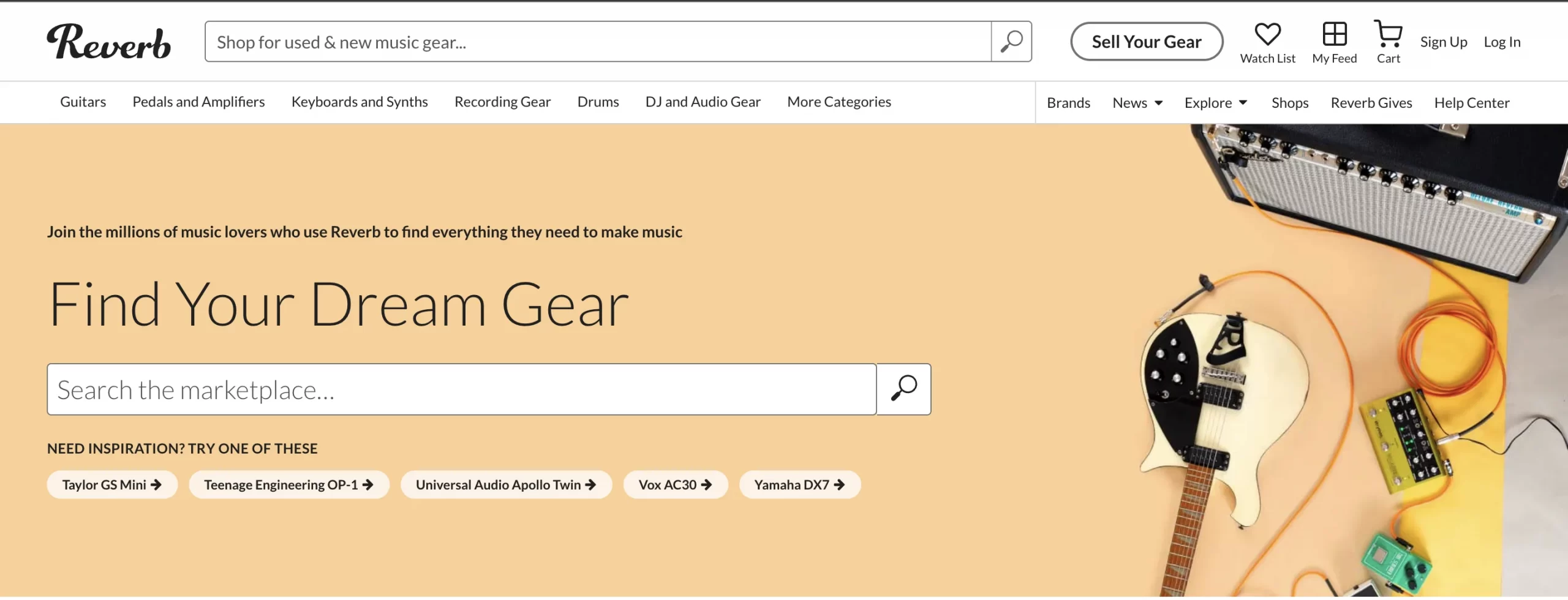
In 2019, Etsy acquired Reverb and it became a wholly-owned subsidiary of Etsy—the global marketplace for unique and creative goods. Nevertheless, the marketplace continues to operate as a standalone company.
How Does Reverb Work?
Like other top online marketplaces, Reverb consists of independent sellers. As a seller, you can create your store on Reverb and start selling by listing your product on this marketplace. There are specific requirements for profile setup and product listings, which we will discuss later.
Additionally, you have to manage your own shop on Reverb in terms of prices, refunds, returns, and exchanges.
Buyer interaction on Reverb is also similar to other marketplaces. Using the search bar, buyers can find different sellers or stores for the music items they want. Therefore, it depends on how well you optimize your listings to reach more customers on this channel.
Who should sell on Reverb?
Reverb is a niche marketplace for music gear sellers. It’s a familiar site for music store owners, musicians, or even famous bands to sell music-related items. Namely, the site has sold gear from famous artists such as Green Day, Maroon 5, and Billy Corgan. If you are running a business in the music industry, setting up a store on the Reverb marketplace is a must.
Reverb Seller Fees
Establishing a Reverb music store and listing your gear is always free on Reverb. In other words, you don’t have to make any initial investment to sell on this channel. You only have to pay a small amount off your earnings when you make money from your listings.
Reverb music marketplace fee structure is simple and transparent. In general, you keep 91.8% of your total earnings on each order with a fixed deduction of $0.49 for the payment processing fee.
Reverb music marketplace keeps 8.19% of your revenue, which consists of 5% for the selling fee and 3.19% + $0.49 for the payment processing fee. Nevertheless, you are subjected to a minimum of $0.50 and a maximum of $500 for the listing fee.
For Reverb Preferred Sellers, the payment processing fee is 2.99% of the transaction amount + $0.49 per transaction.
Here’s the fee formula for better understanding:
Total fees = 5% Selling Fee + 3.19% + $0.49 Payment Processing Fee = 8.19% + $0.49
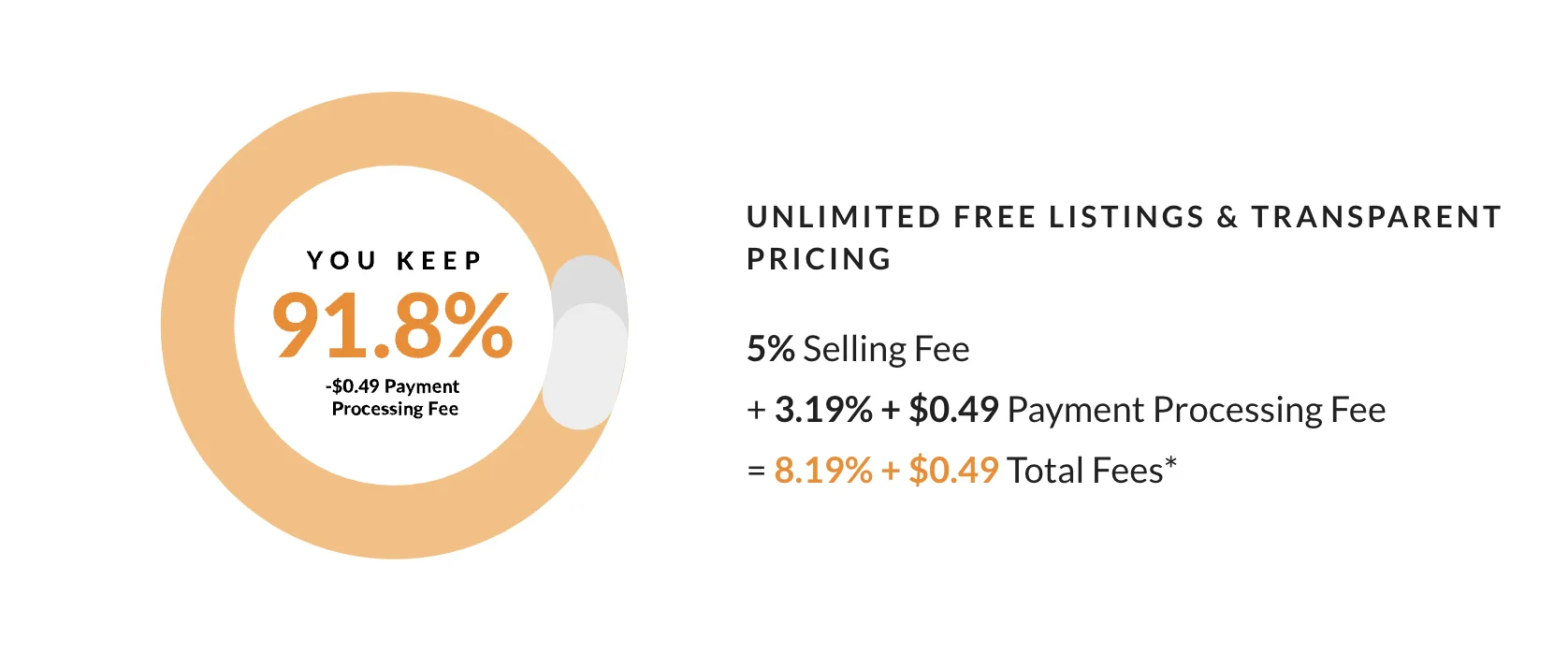
Let’s take an example for revenue calculation on an order of $200 with $20 included for shipping. The selling fee you have to pay will be
5% x $200 (*5% Selling Fee) + 3.19% x $200 + $0.49 (*3.19% + $0.49 Payment Processing Fee)
= $10 + $6.38 + $0.49
= $16.87
So you will lose $16.87 on a $200 order.
How to Sell on Reverb Marketplace
Without further ado, we’ll be guiding you through the process of setting up a store and starting to sell on the Reverb marketplace.
#Step 1: Create a Reverb music store
From the marketplace’s homepage, navigate to the top right of your screen and click Sign Up.
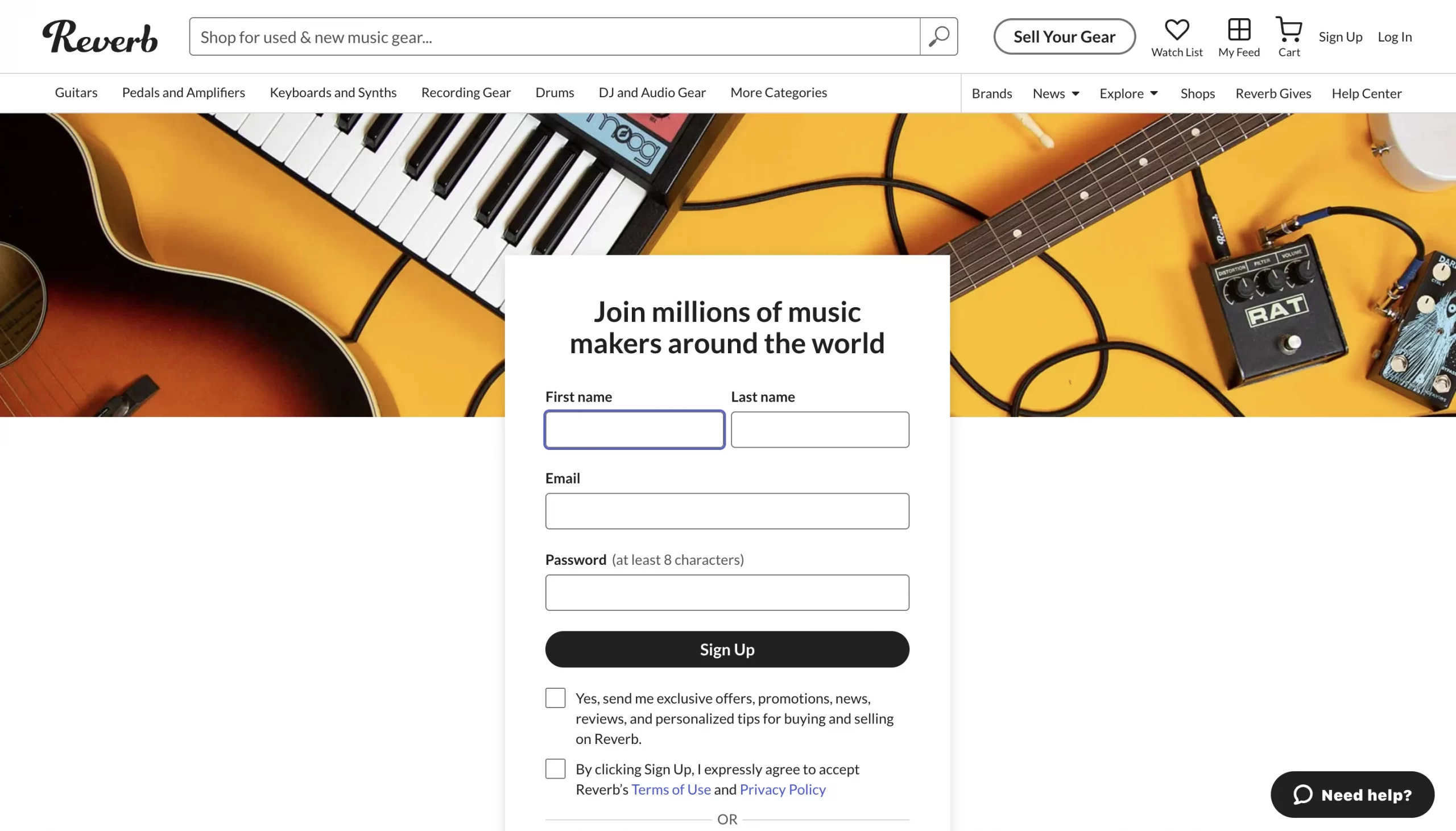
After filling in your information, click Sign Up. This will take you to the home page of your newly registered Reverb account. However, before getting the account to work and listing your products, you will have to check your mailbox to confirm the email address. If you don’t find the Reverb email, you can have a look at your spam folder.
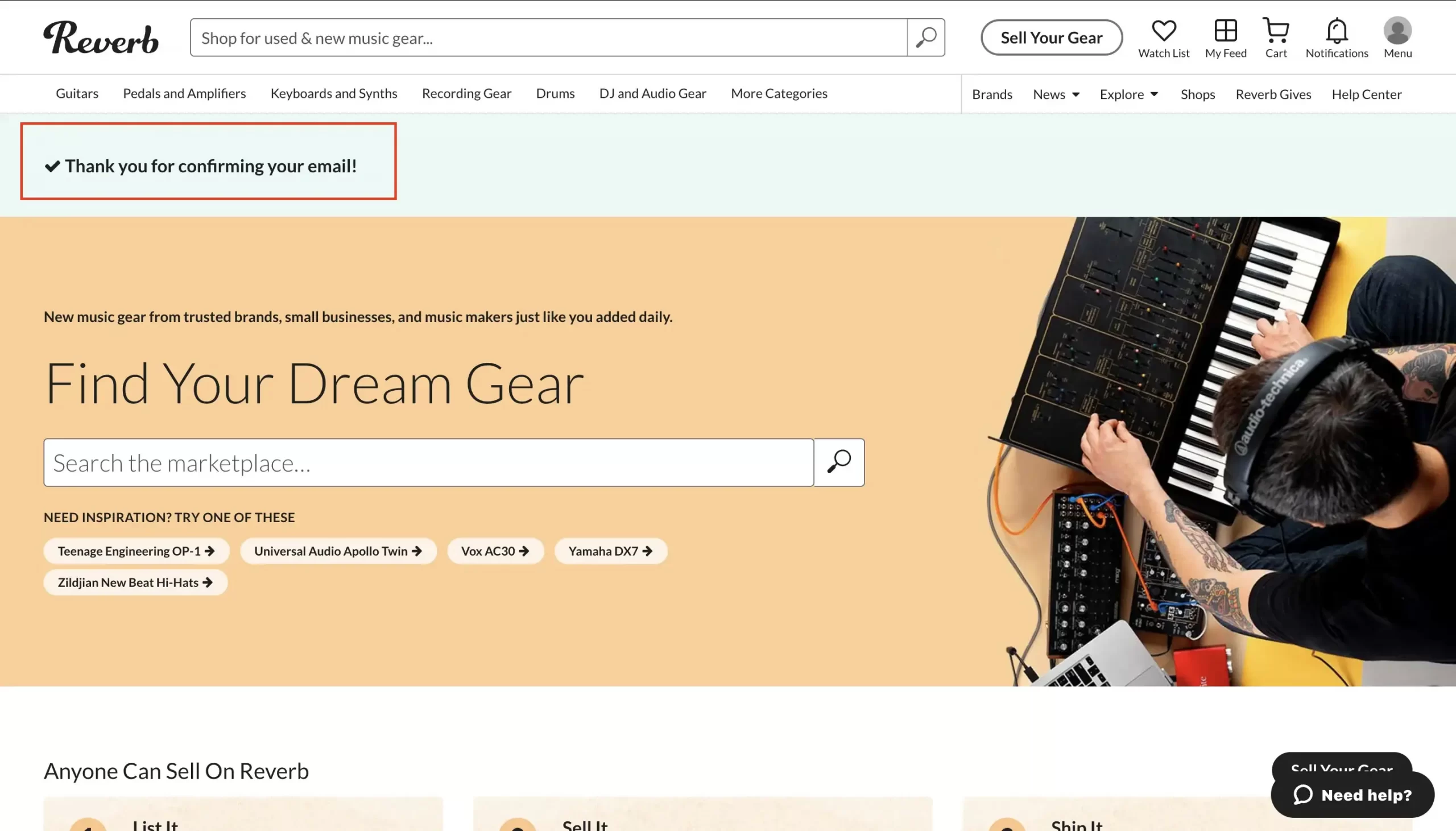
As you confirm the email address, you can proceed with filling in your account details including
- Shop name
- Country (where you are located)
- Your name
- Street address
- City
- State
- Zip code
- Phone number
- Language and currency preference.
#Step 2: Create product listings
At this step, you have two options to create a product listing: Make use of Reverb listing information or Start your listings from scratch.
If you use Reverb listing information, you can easily follow the instructions on the homepage. All you have to do is to type in the product category/name you are selling. Reverb Marketplace then uses its library of gear information to help you autofill product details, price your gear, and market your listing.
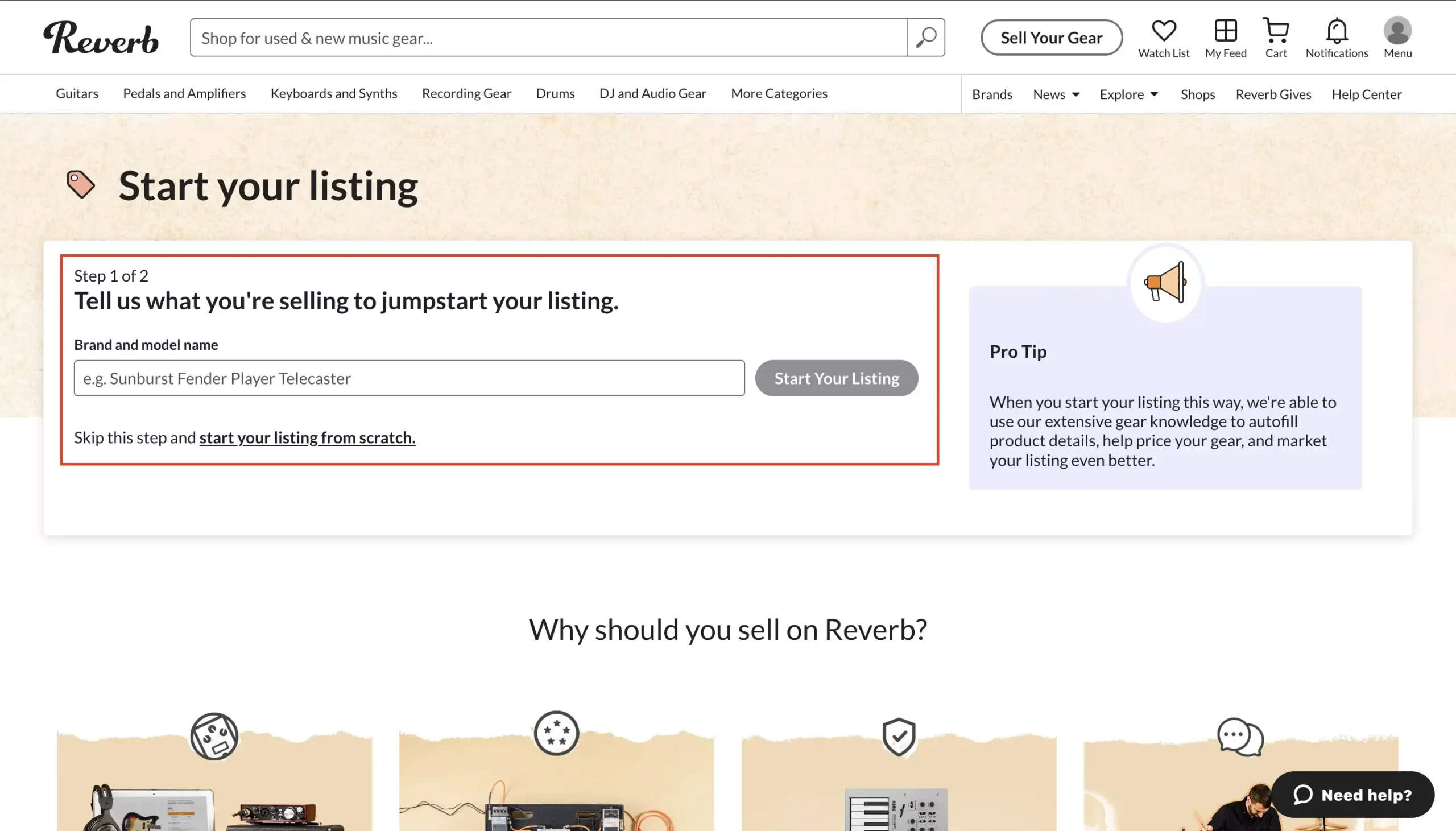
Let’s say you are selling guitars, you can type in Guitar on the text bar and click Start your listing. You will then see a product library of guitars for you to select.
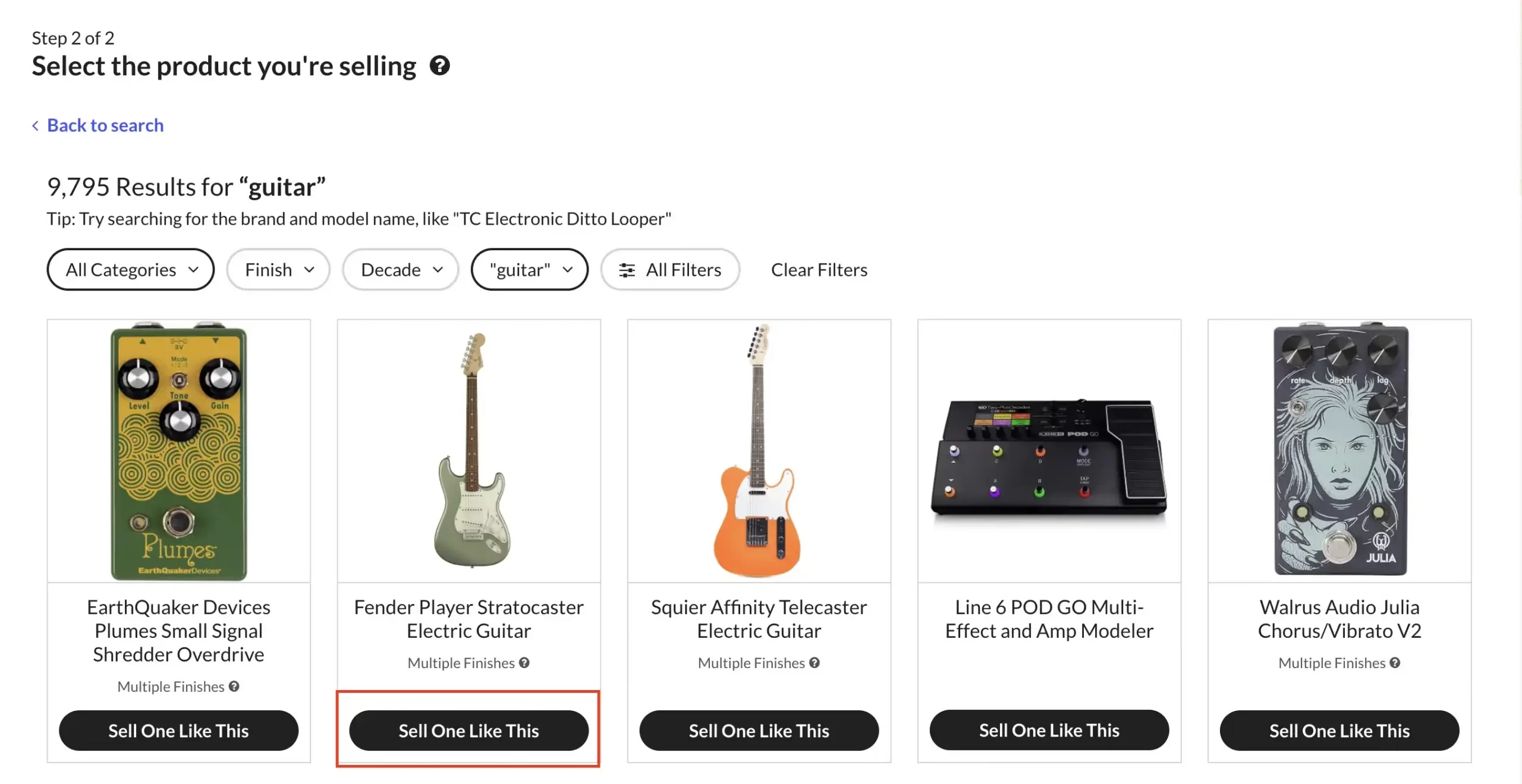
To proceed, you can choose Sell one like this on the product brand you have. Then the site will help you fill in the information on Year, Finish, Manufacture country, and Category. All you have to do is to select the product model and write a listing title.
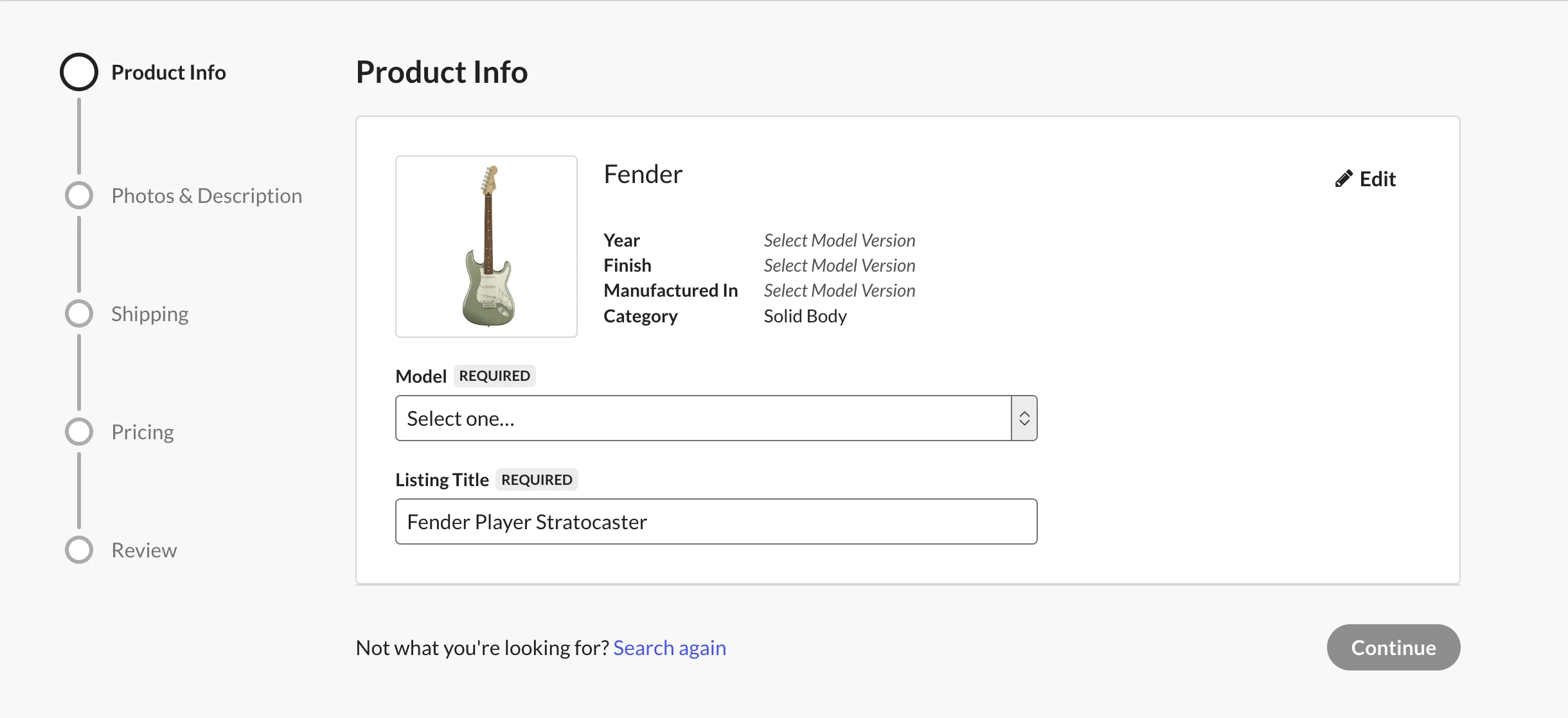
However, if you wish to do otherwise, you can click on Start your listing from scratch. The site will take you to a page where you can fill in the details of your product listings. Details to fill in include:
- Brand
- Model
- Year (If you do not know the exact year, you can use a time period like the mid-80s or 1998-2000)
- Finish
- Manufacturer’s country
- Category
- Listing title
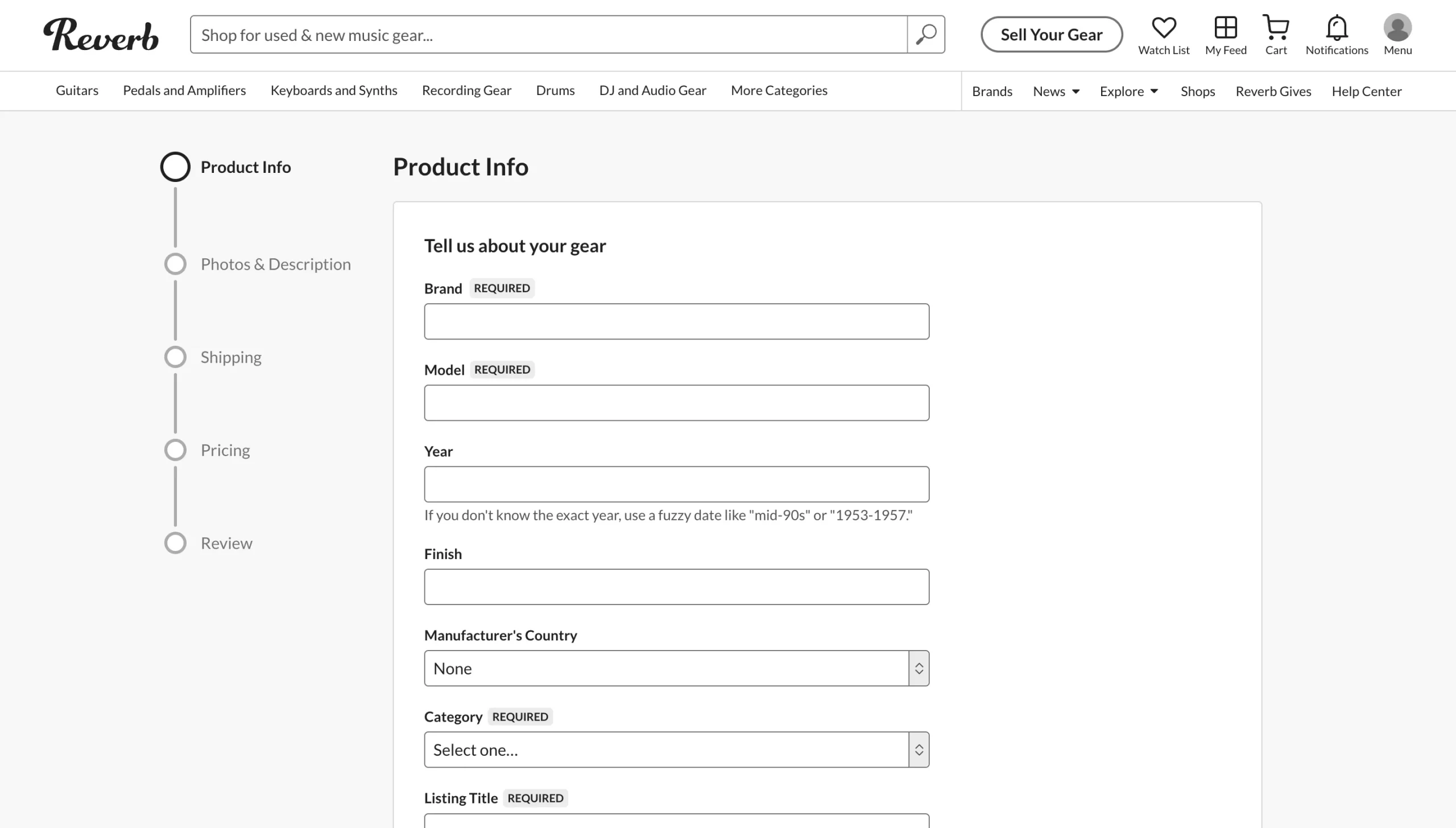
If this is a handmade product, you can tick the checkbox under the question Is this handmade? to validate the information.
#Step 3: Upload product photos
After finishing all the basic information about your product, you can continue uploading product photos.
Let’s say you are selling a vintage guitar. Upon giving details of the guitar, Reverb Marketplace will instruct you on how to upload proper images of your products. Instructions include:
- Use original photos for used gear;
- Do not use screenshots or pictures from other sites, sellers, or manufacturers;
- Adopt square photos (encouraged) that should be 620x620px or bigger.
Additionally, there are illustrations of photo angles that should be in your uploaded pictures. Your imported pictures should describe the product from the following angles:
- Primary
- Every angle
- Details
- In use
- Size and scale
- Imperfections
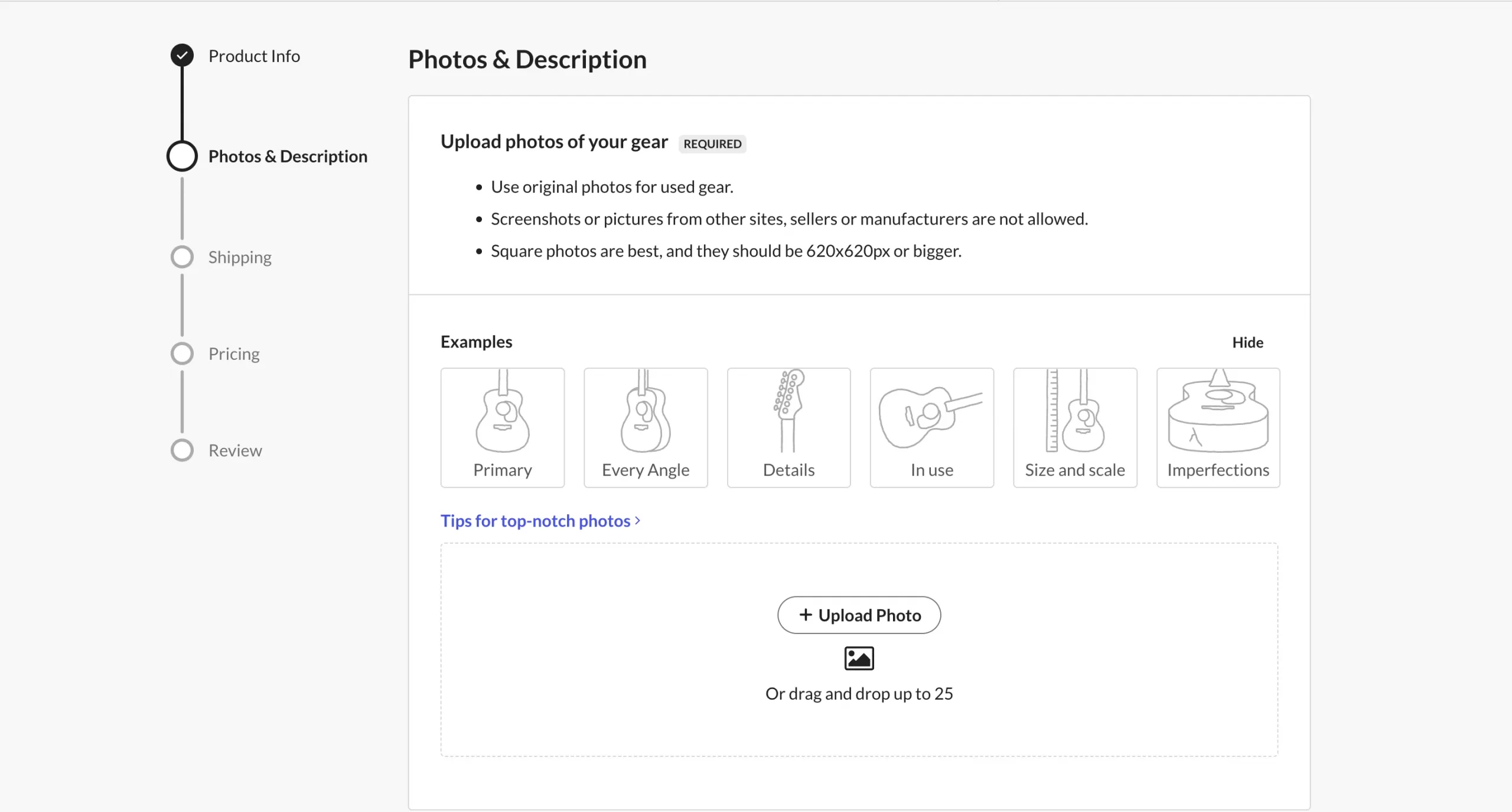
#Step 4: Fill in the product description
This is the step where you give out details of your product. More specifically, it’s required to fill in product condition and write product description.
You can select one of the following conditions for your listing from the dropdown menu:
- Brand New
- Mint
- Excellent
- Very Good
- Good
- Fair
- Poor
- Non-Functioning
For the product description, make sure you include every single note about your items and be more transparent about the product’s condition. Here are a few things to keep in mind:
- Understand your target audience and address their needs;
- Explain the entire product in detail;
- Optimize your content for Reverb’s search engines.
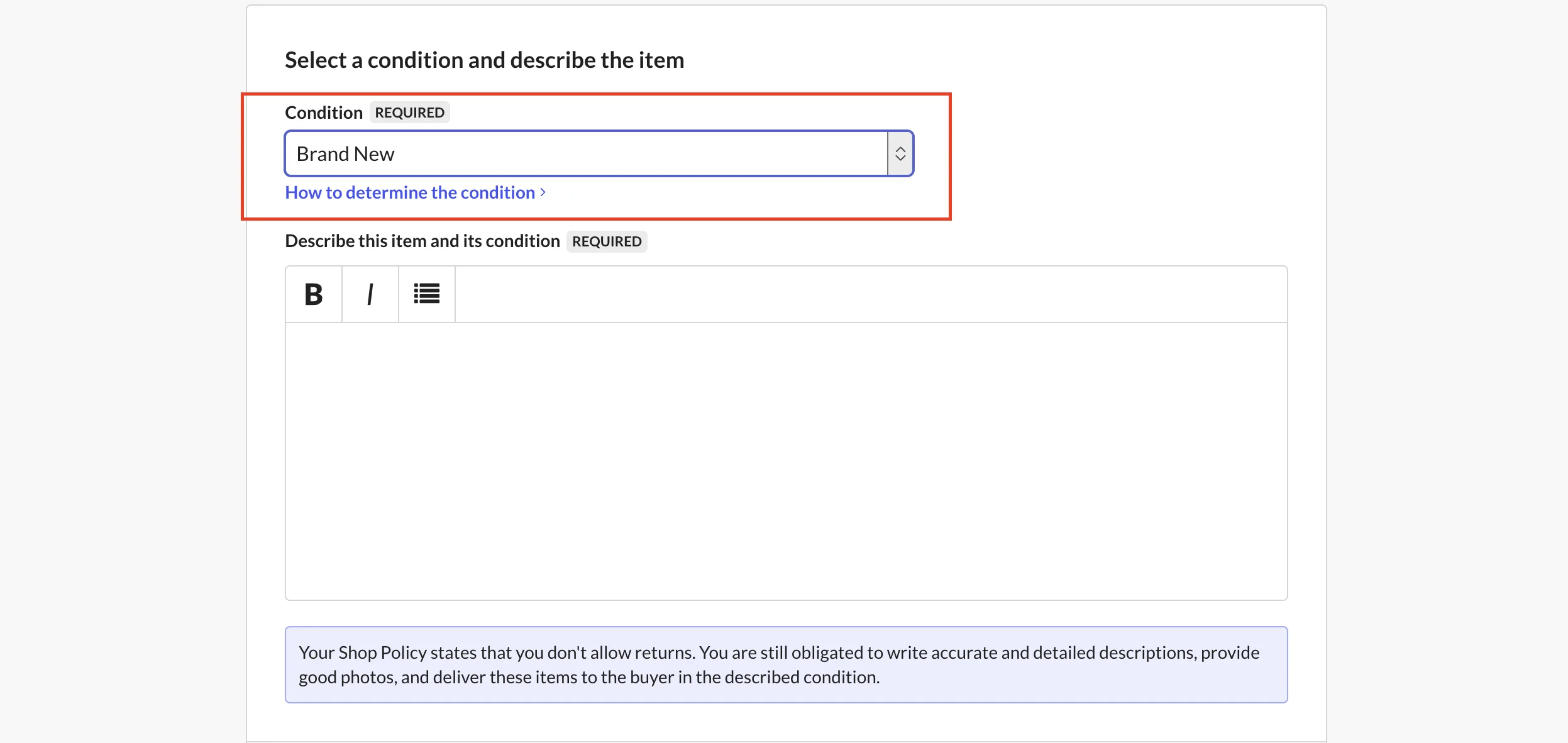
What’s more, you can also fill in SKU or embed a Youtube video in your listing.
#Step 4: Decide shipping method
You have two shipping choices regarding this step: Shipping or Local Pickup.
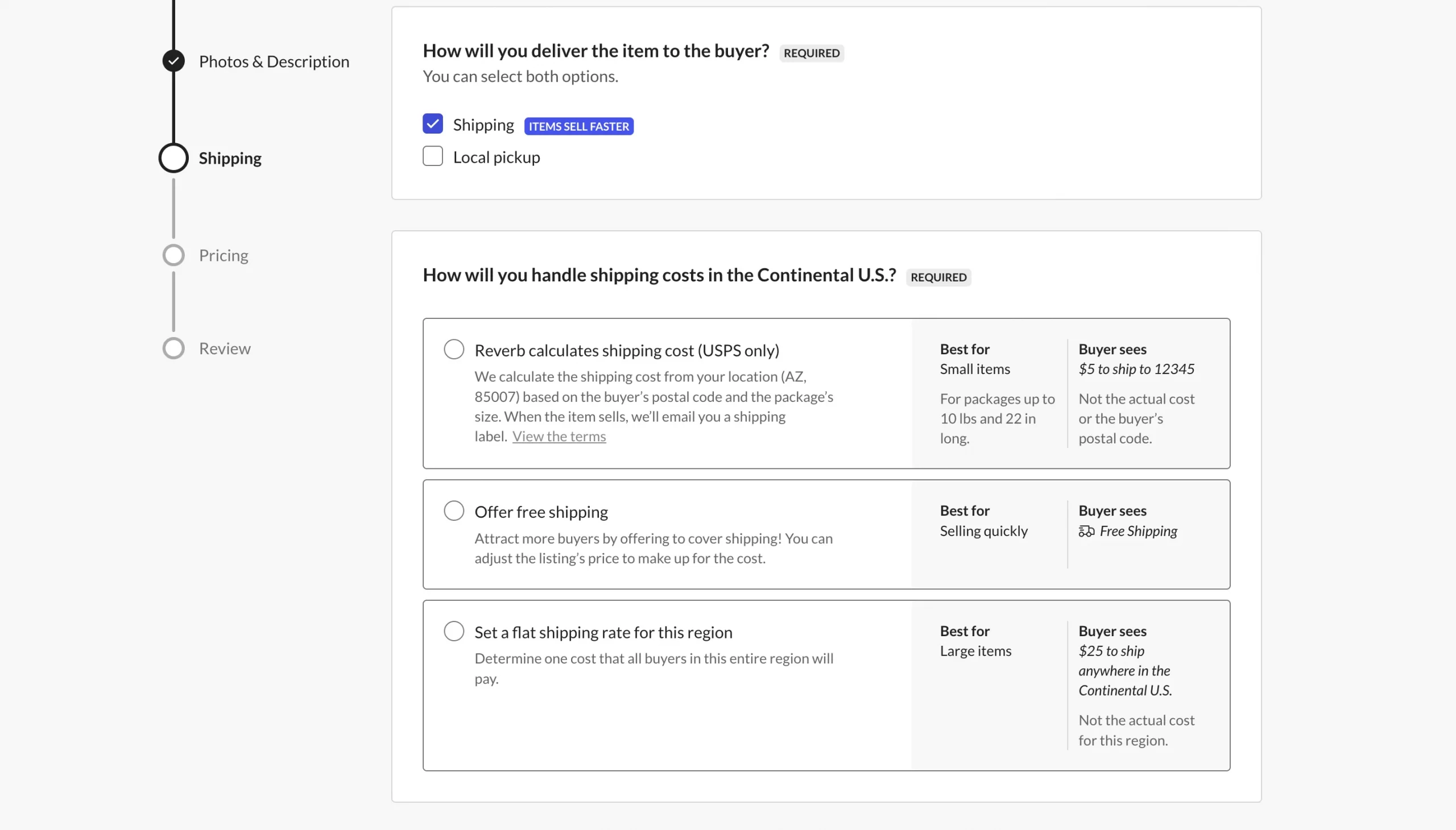
If you select Shipping, there are three options to handle shipping costs:
- Reverb calculates shipping cost (USPS only): This is best for small items of up to 10 lbs and 22 in long, and buyers will see the calculated price by Reverb.
- Offer free shipping: This is the best option if you want to be more competitive, and it helps sell more quickly.
- Set a flat shipping rate for this region: With this option, you can determine a fixed shipping cost for a specific region. It’s the best choice when you are selling large items like drums, pianos, etc.
In addition, the Reverb marketplace supports shipping label printing. You can save up to 50% on carrier rates and gain access to Safe Shipping when you use this service.
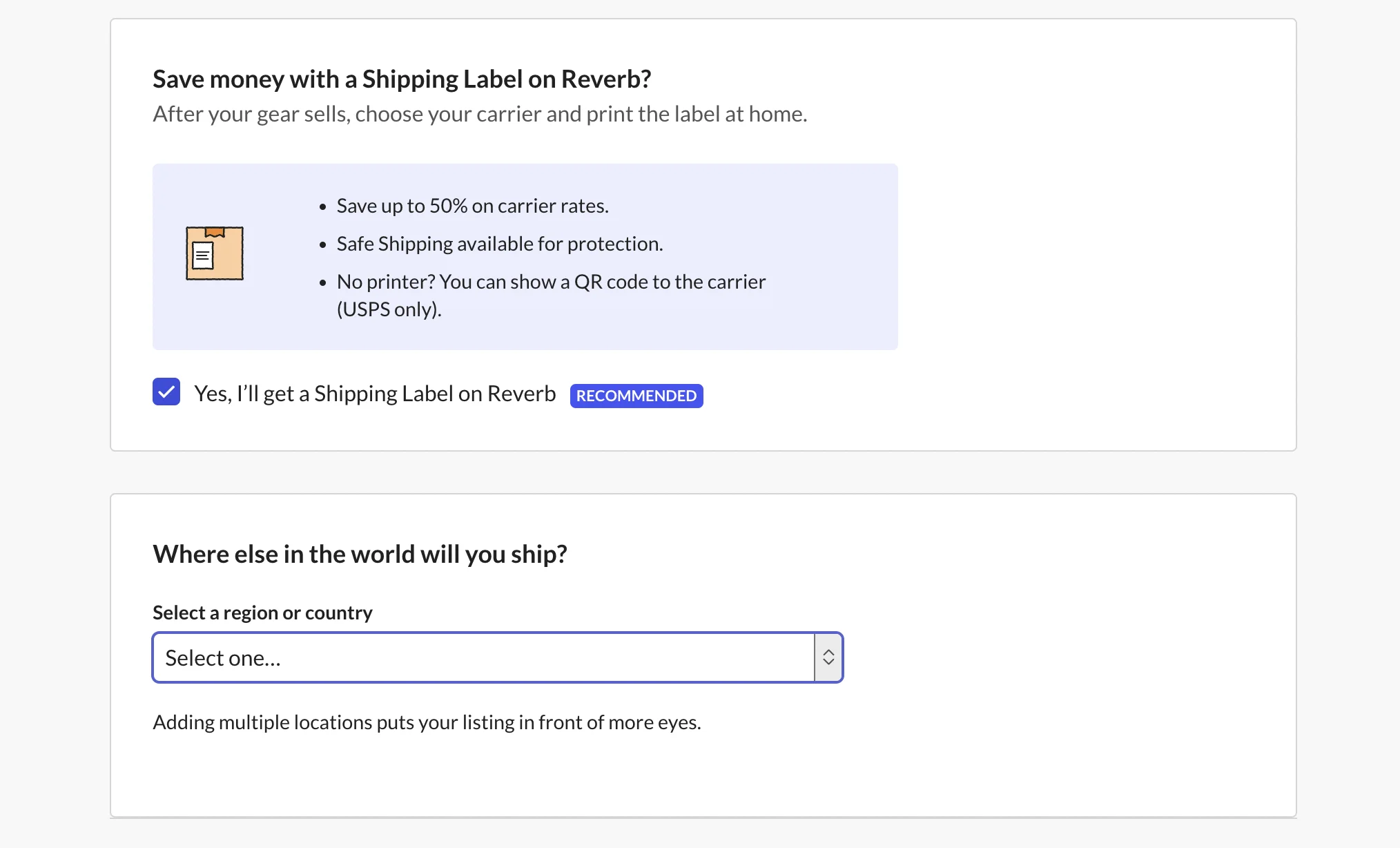
#Step 5: Price your listings
This is the step where you mark up a selling price for your item. To price reasonably and effectively, you can take references from the average price of similar items that are sold on Reverb. Moreover, a price library on Reverb is available to help evaluate your Reverb-used gear.
After doing price research, you can come up with a competitive offer for your potential buyers while still making a profit.
Nevertheless, if you are selling brand-new items, you can consider offering free shipping or small gifts included in the purchase.
As you mark up the selling price, Reverb will automatically calculate the final amount you receive once the product is sold.
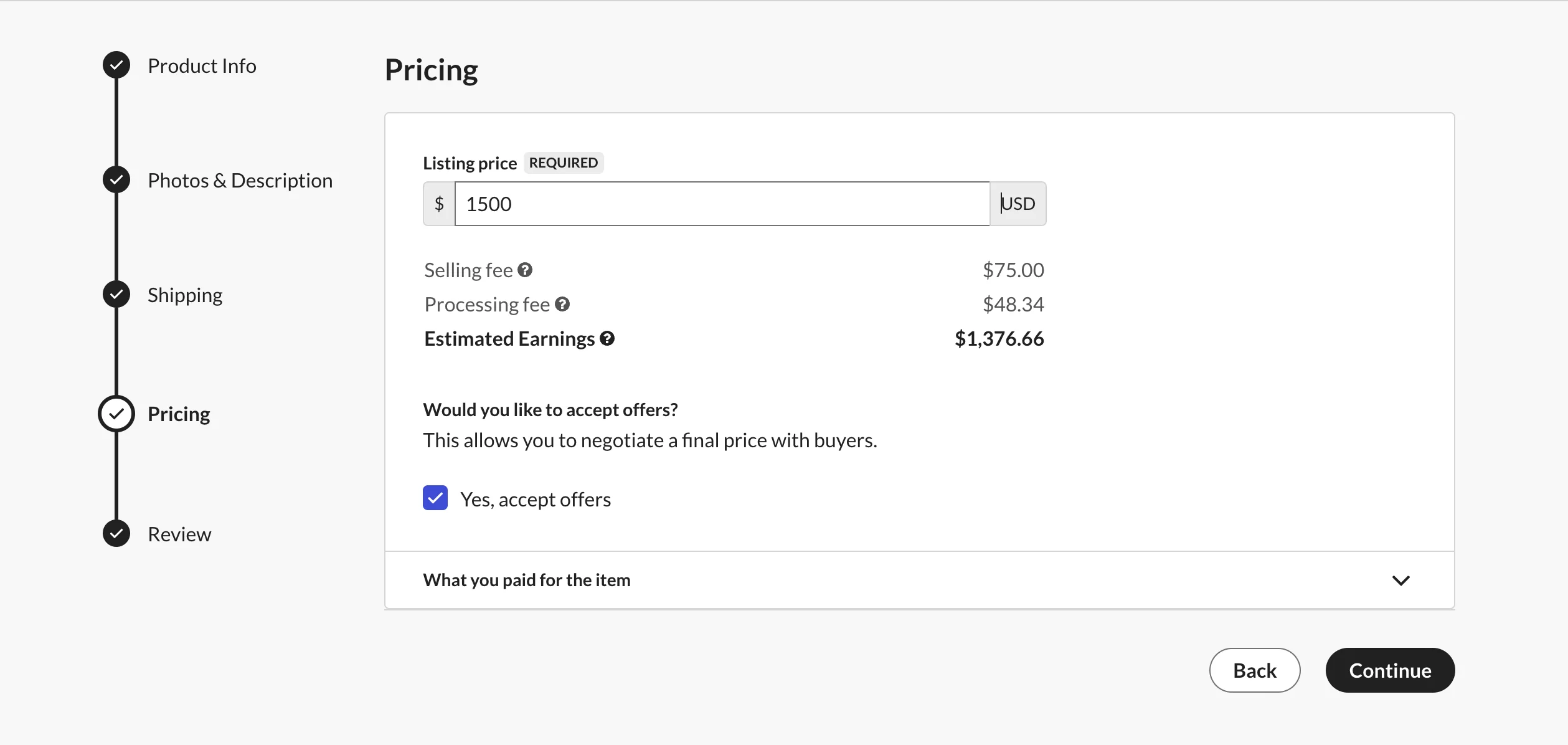
Additionally, you can decide whether or not to accept buyer’s bargains for the listing.
#Step 6: Review and publish your listing
The last step is to review and publish your listing. As you proceed to this step, there is a pop-up window of your entire listing details (Product info, photo & description, shipping, pricing) where you can make direct changes, if any. If there is no change you wish to make, you can publish the listing by hitting on the Publish button.
Top Selling Products on Reverb Marketplace
To harness the most from the channel, you can start by selling the most-wanted items on the Reverb marketplace with a competitive offer. Below is the list of bestseller brands and product categories.
Top-selling brands:
- Fender
- Boss
- Electro-Harmonix
- Gibson
- TC Electronic
- MXR
- Roland
- Ibanez
- Digitech
- Yamaha
- Korg
- Keeley
- Epiphone
- Focusrite
- Line 6.
Best seller product categories and models:
Product categories | Product |
Effects and Pedals | Microcosm |
Electric Guitars | Paranormal Cabronita Telecaster Thinline |
Keys and Synths | SQ-64 Polyphonic Sequencer |
Pro Audio | Scarlett Solo 3rd Gen USB Audio Interface |
Why Sell on Reverb for Music Instrument
If you are selling musical instruments, the Reverb marketplace is an ideal destination to land your business. Unlike other massive marketplaces like eBay or Amazon where people sell all kinds of things, Reverb is a music-focused channel that only allows the selling of musical instruments. With such a reputation, you can reach more product-fit customers and eventually achieve a higher conversion rate.
Therefore, if you are selling anywhere else, it’s time to sync your listings and scale onto Reverb to grow your business. With LitCommerce, you can easily do Reverb sync by quickly importing your listings from other platforms into Reverb.
Reverb Marketplace: FAQs
How to sell a guitar on Reverb?
To sell a guitar on Reverb, follow these steps:
1. Go to Reverb.com and create an account if you don’t have one.
2. Click on the Sell on Reverb button in the top right corner of the page.
3. Select “Guitar” as the category for your item and click Start Selling.
4. Follow the prompts to enter details about your guitar, including its make, model, condition, and any additional features or accessories.
5. Take high-quality photos of your guitar from multiple angles.
6. Set a price for your guitar. Consider the current market value of similar guitars and factor in the condition of your guitar.
7. Preview your listing and make any necessary changes.
8. When you’re ready, click the Publish button to make your listing live.
How to contact Reverb?
If you have a specific issue or question, it may be helpful to visit the Reverb Help Center first. Otherwise, you can click on the Contact Us link at the bottom of its homepage to fill in a contact form. Additionally, you can email Reverb at [email protected] or call Reverb at 1-312-421-4537 (this is a US phone number).
Who owns Reverb?
It was founded in 2013 by David Kalt, and as of 2021, he is the CEO of the company.
Conclusion
Selling on Reverb is a fantastic way to turn your love of music into a profitable venture! By following the steps outlined in this guide, you’ll be able to set up a seller account and start selling easily.
With the help of our syncing tool, you can quickly import and sync your music instrument stock into Reverb! Ready to take your online business to the next level? Drop us a message! You can also join our active community to catch up with the latest eCommerce trends!

